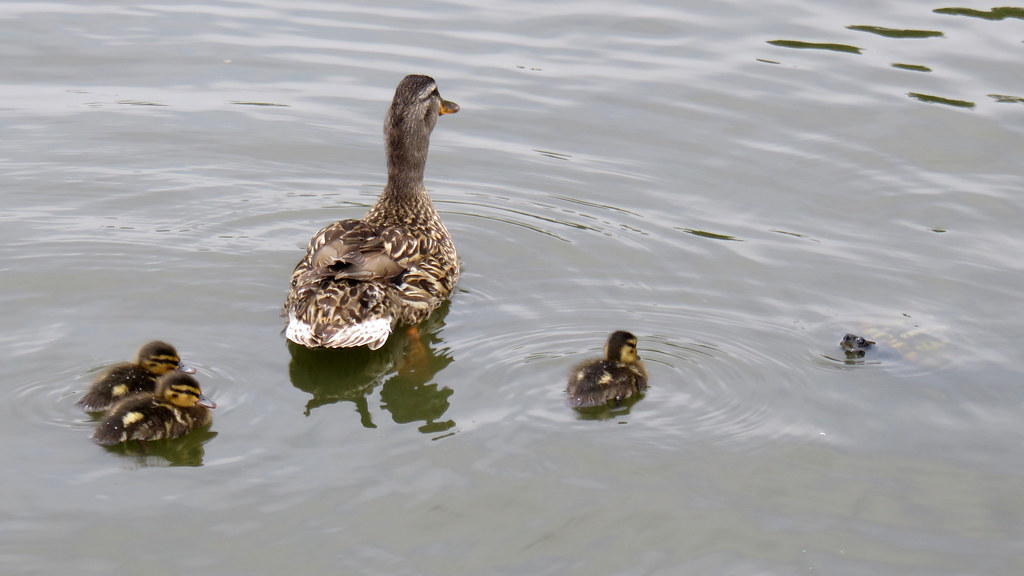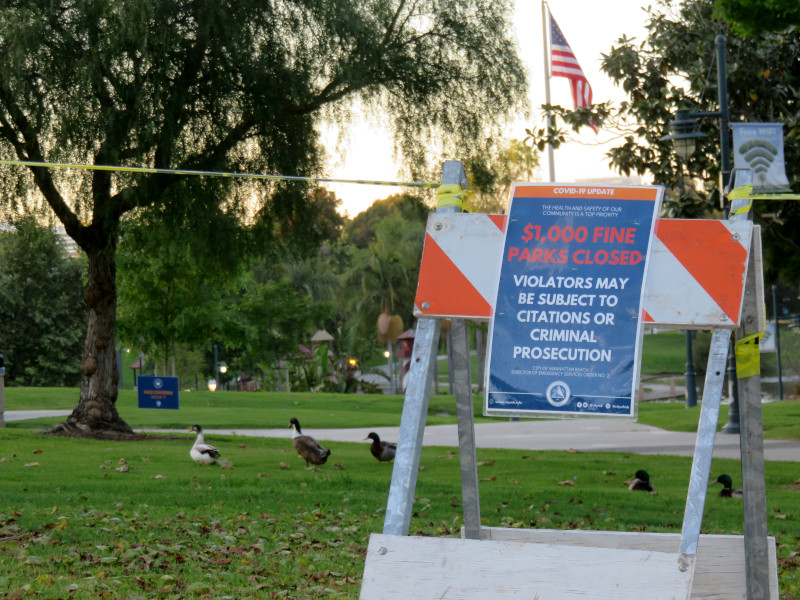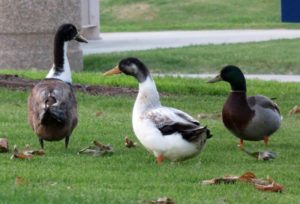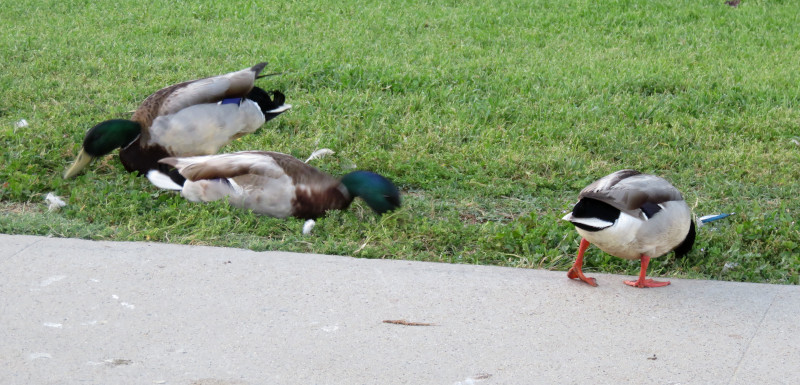Finally getting around to sorting through photos from a walk at the pond and botanical gardens at Polliwog Park…um…two months ago.
The third duckling on the right was spooked by the turtle surfacing its head right next to it. Between this shot and the next, a few seconds later, it had darted away and hidden behind its mother!
Ducks (mostly mallards like these), coots and geese (mostly Canada Geese) make this pond one of their regular migratory spots. Seagulls, pigeons and crows stop by regularly. Smaller birds mostly stick to the other parts of the park. The turtles, like those in most of the ponds around here, are feral – released pets and their descendants.




